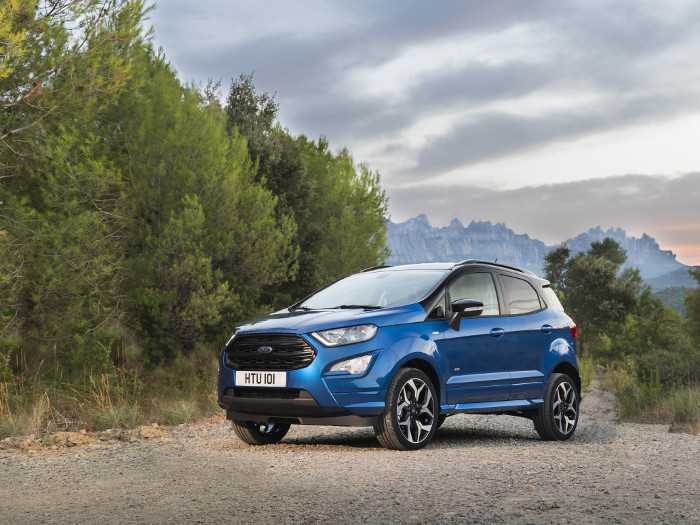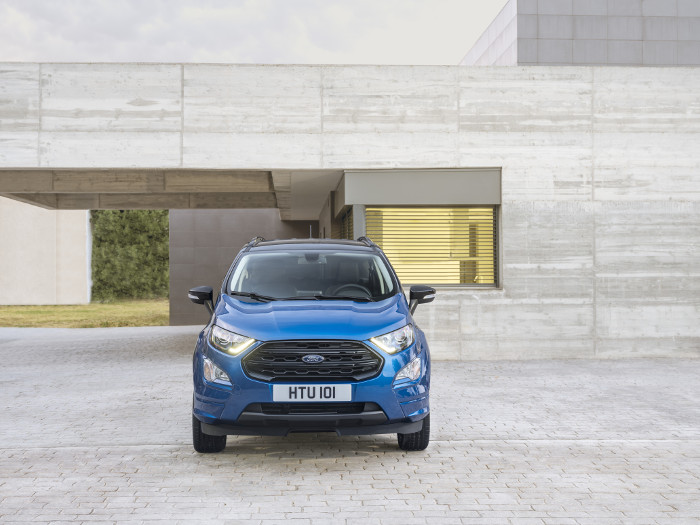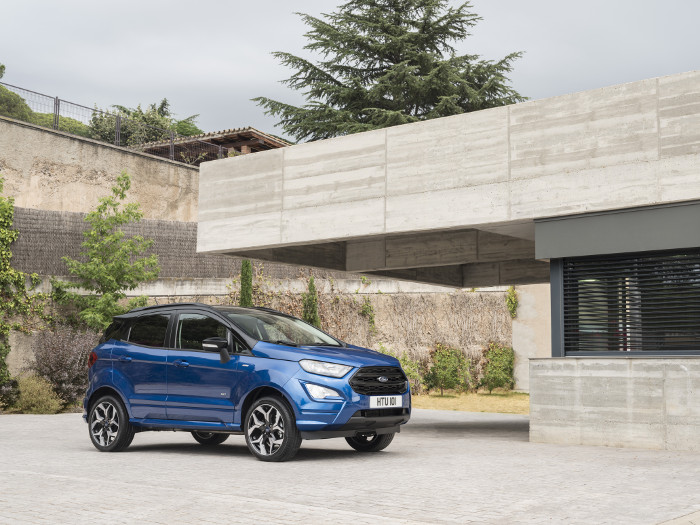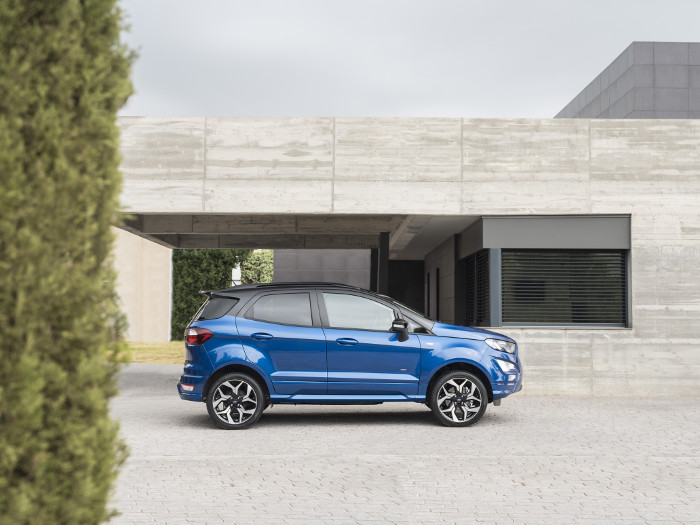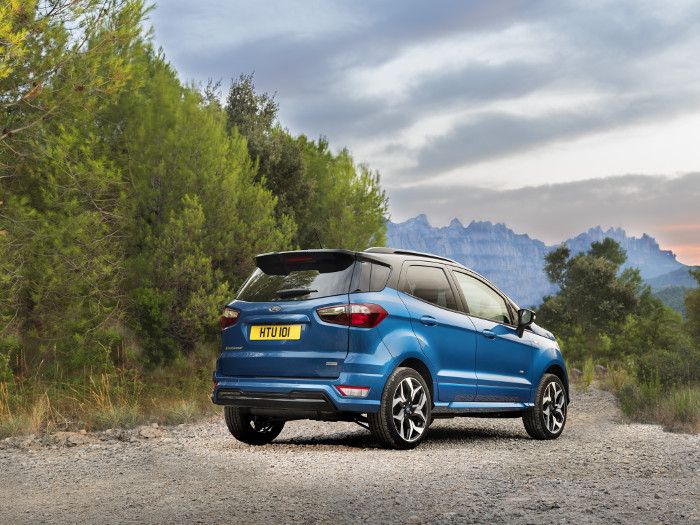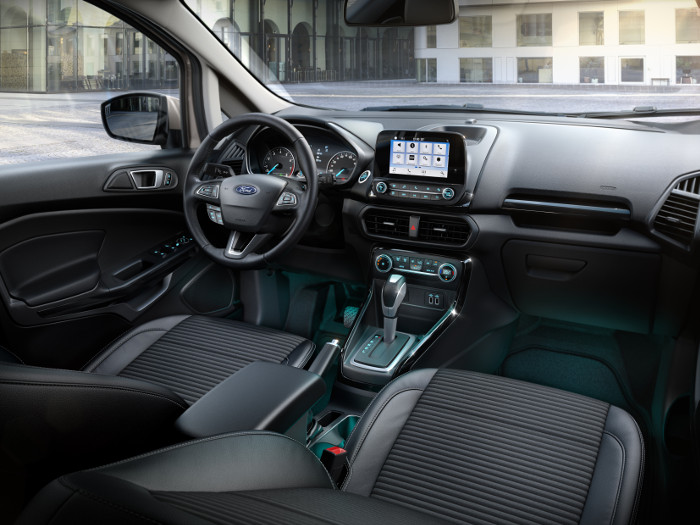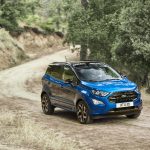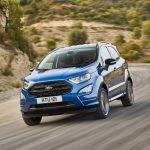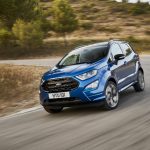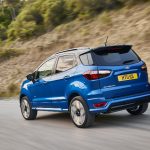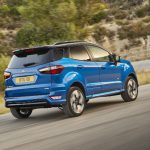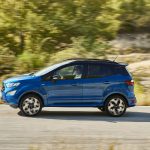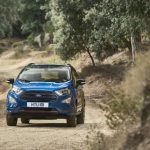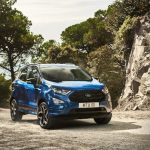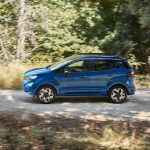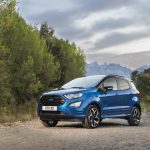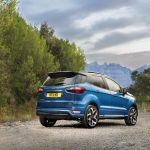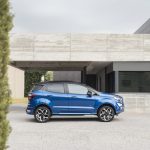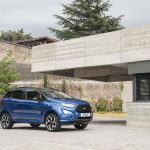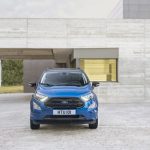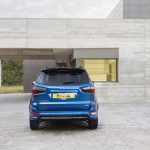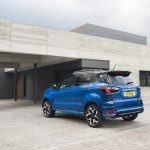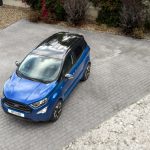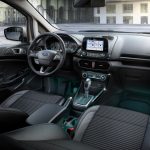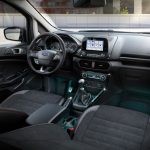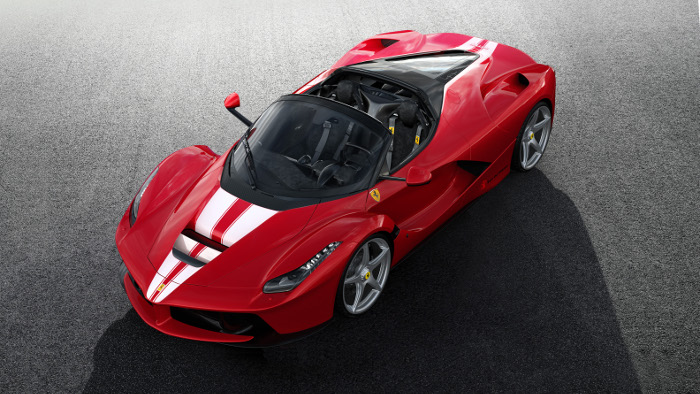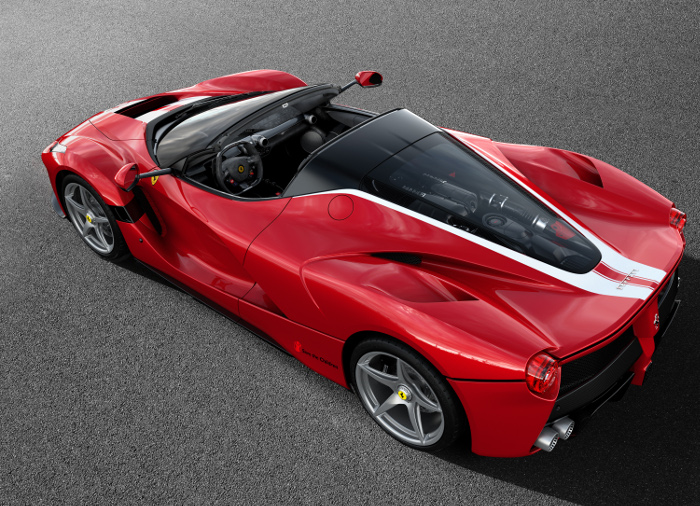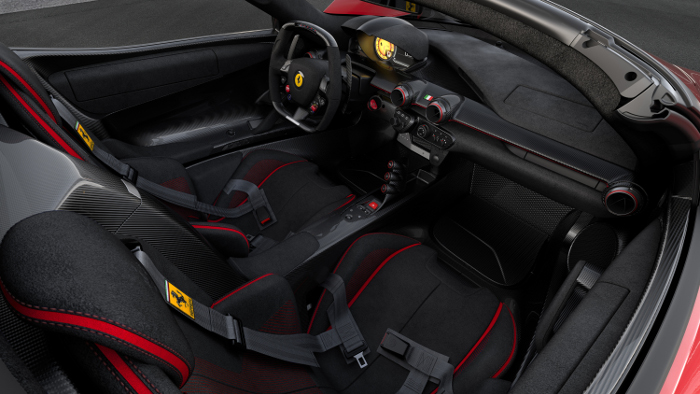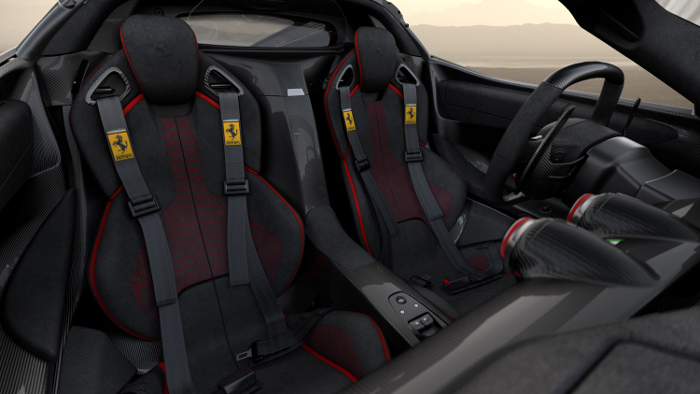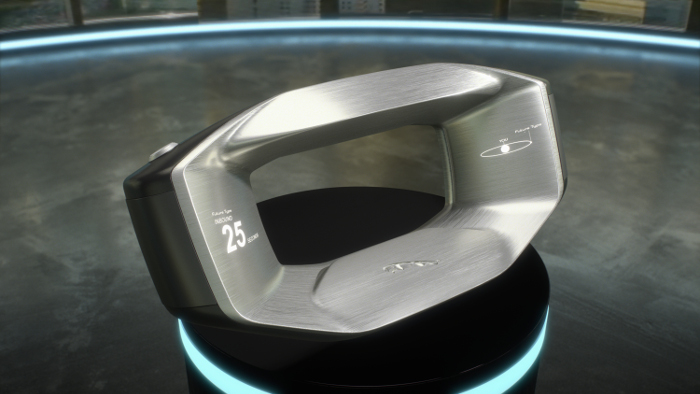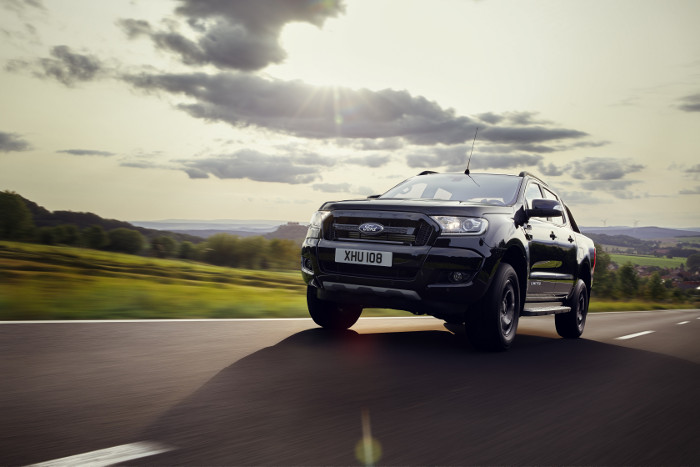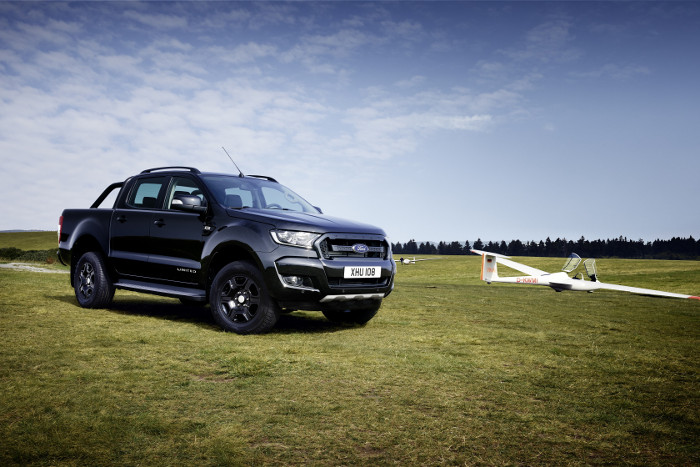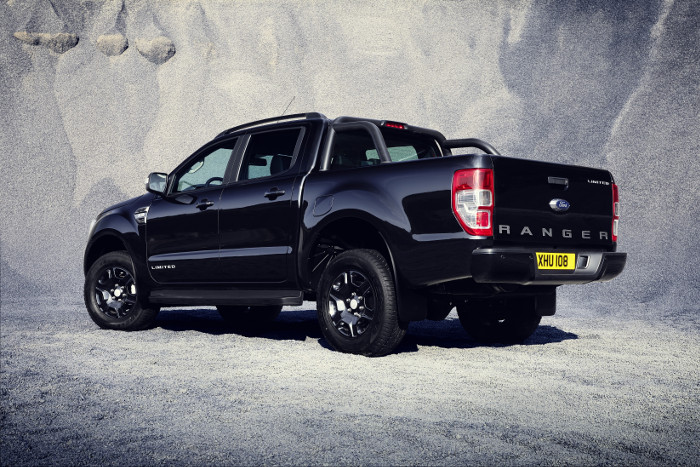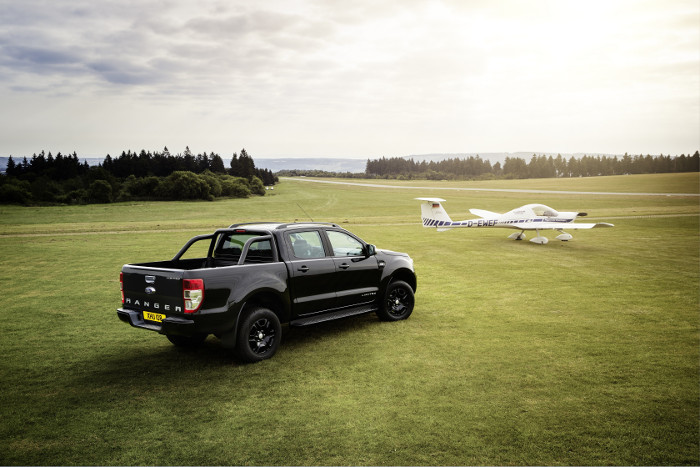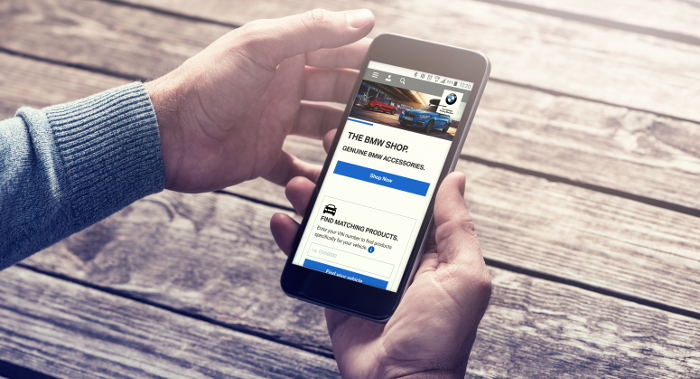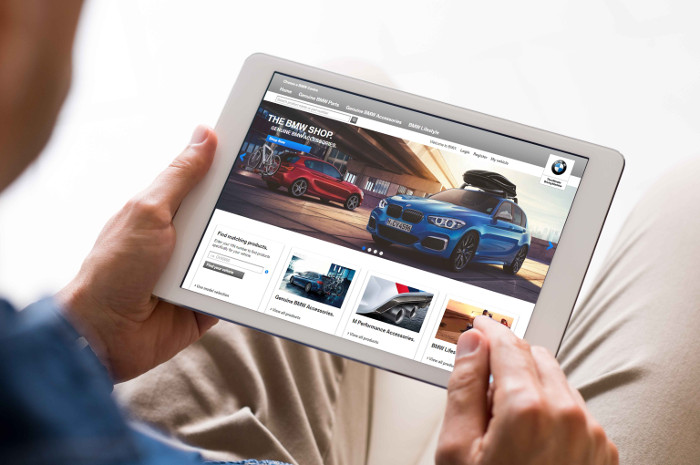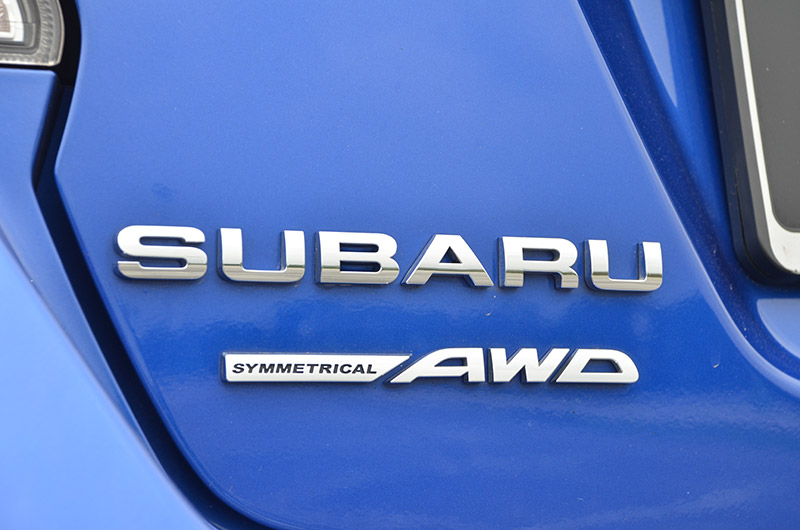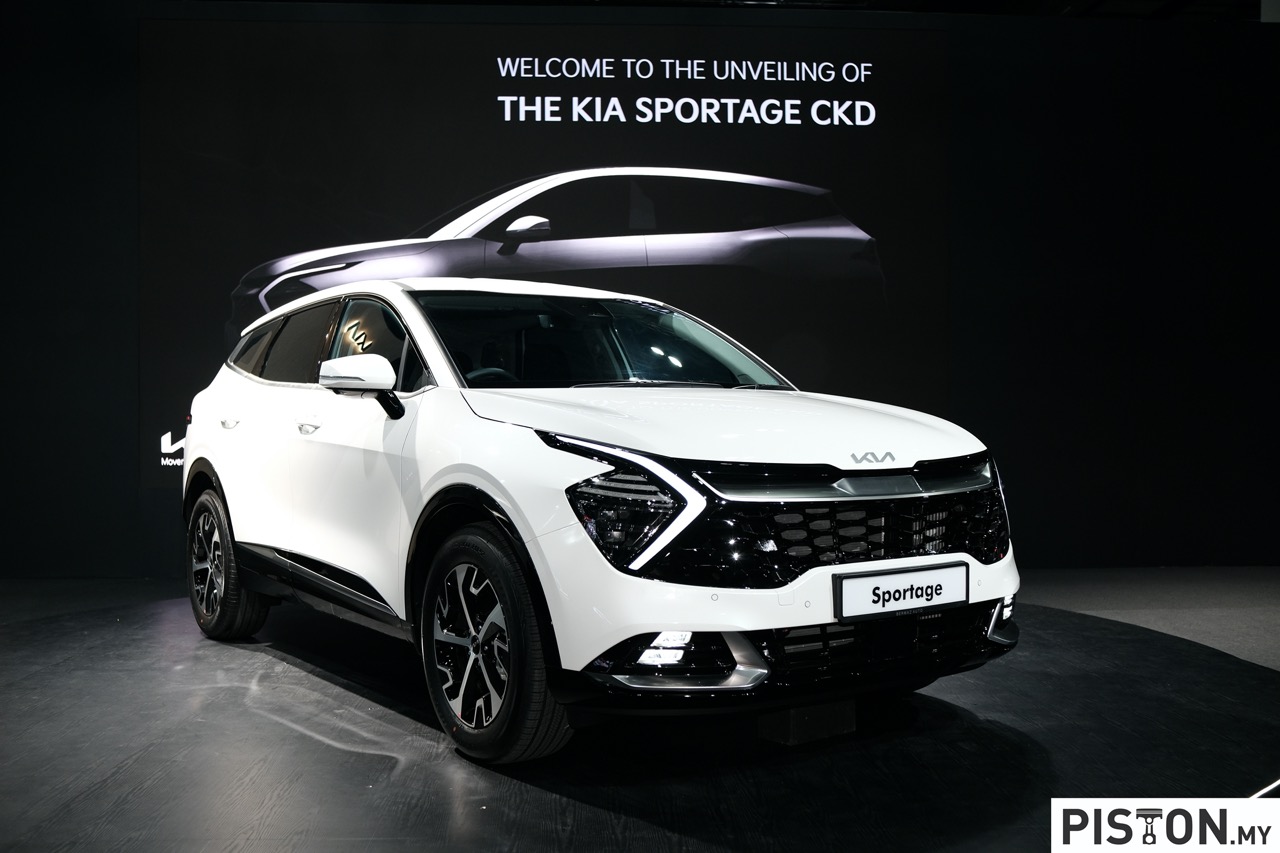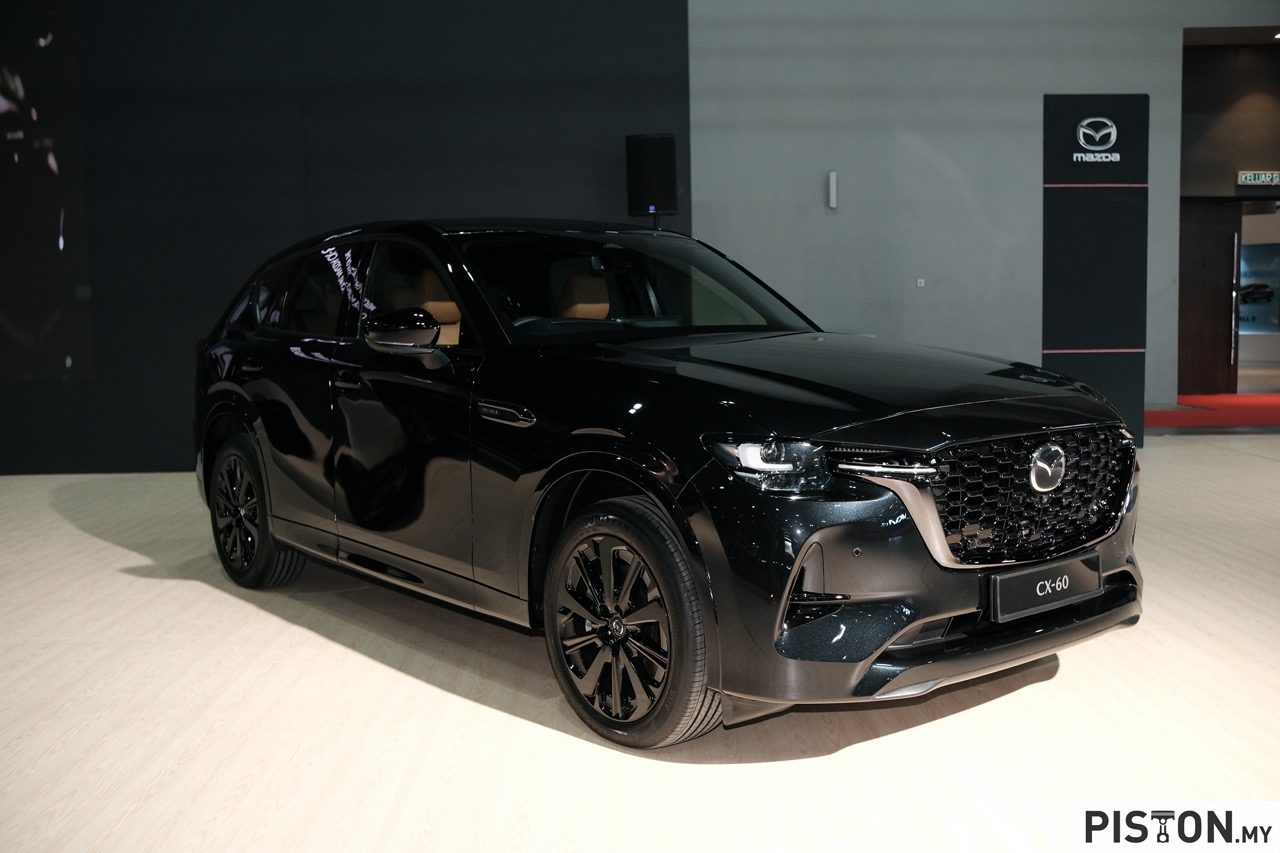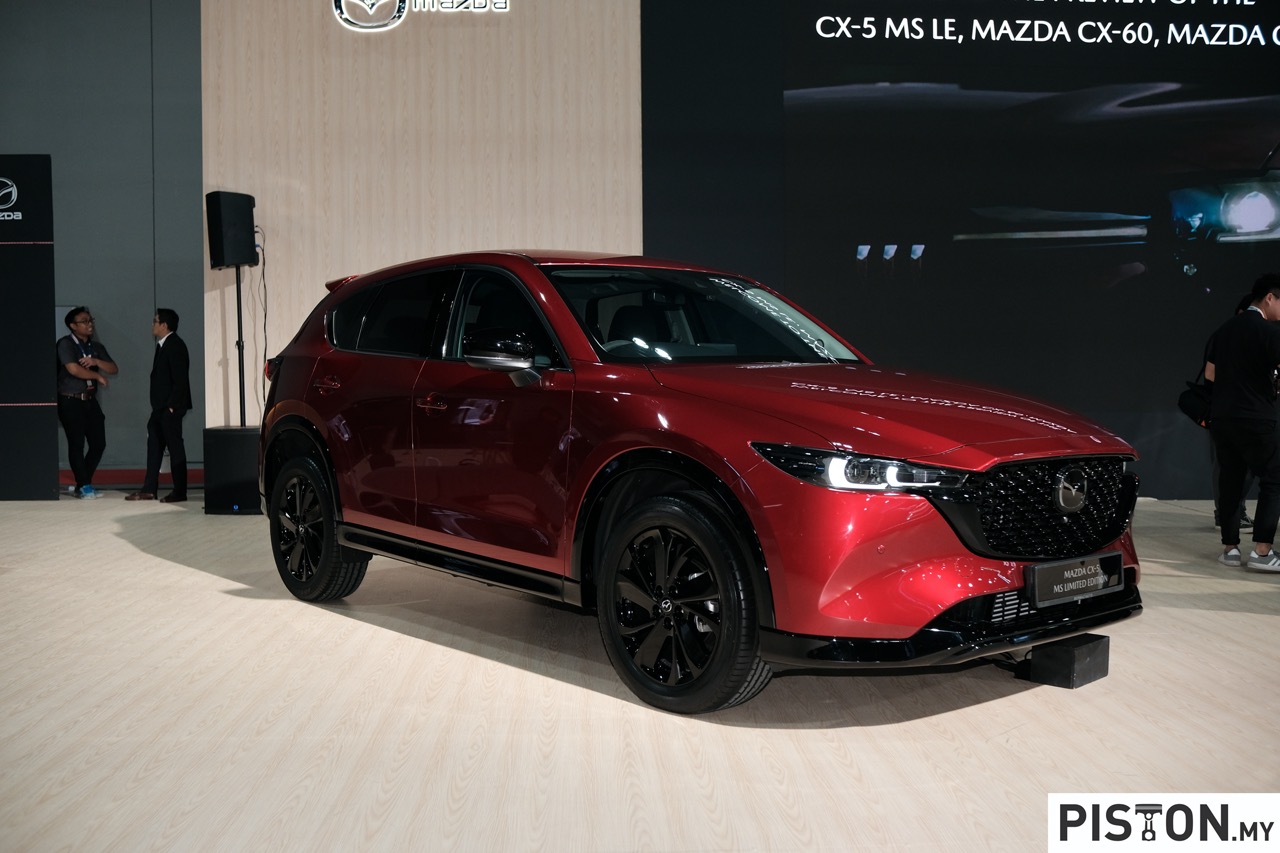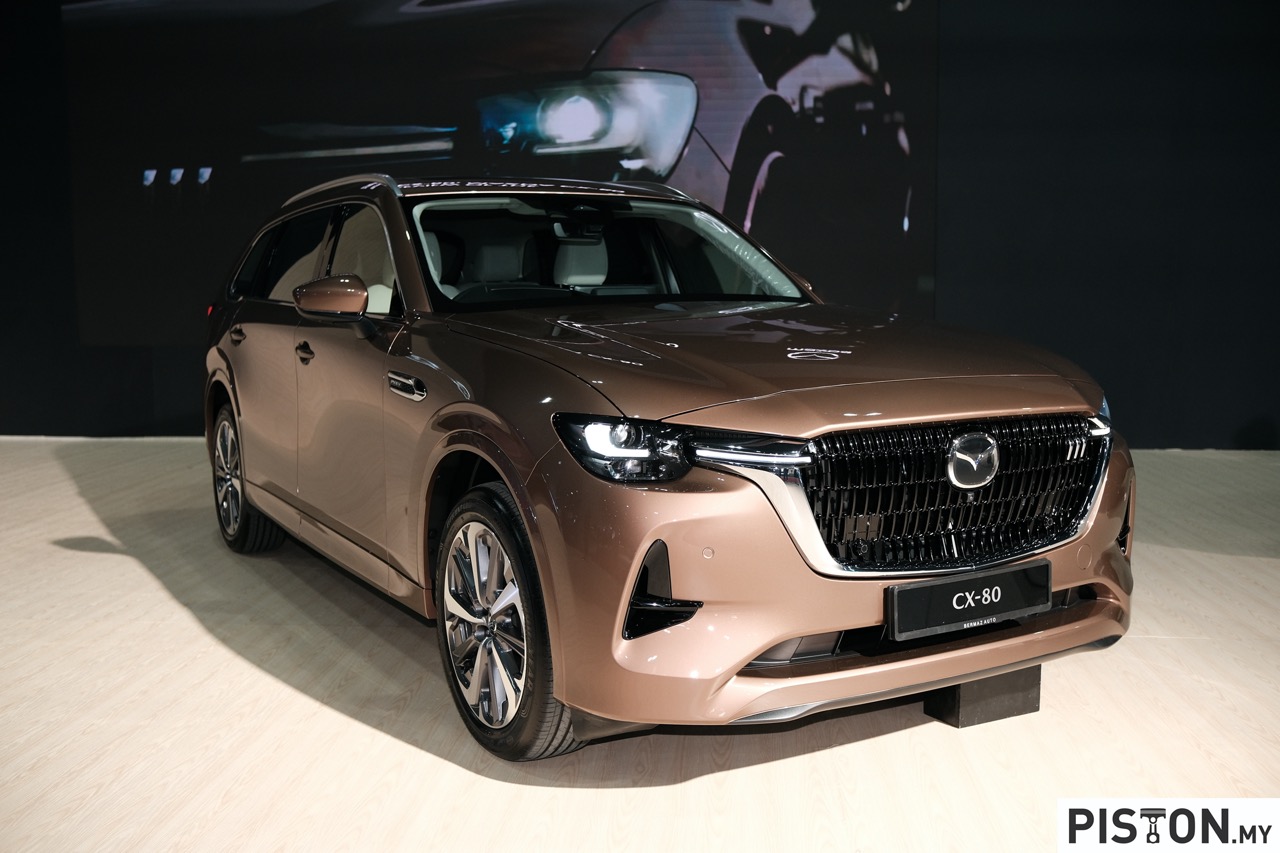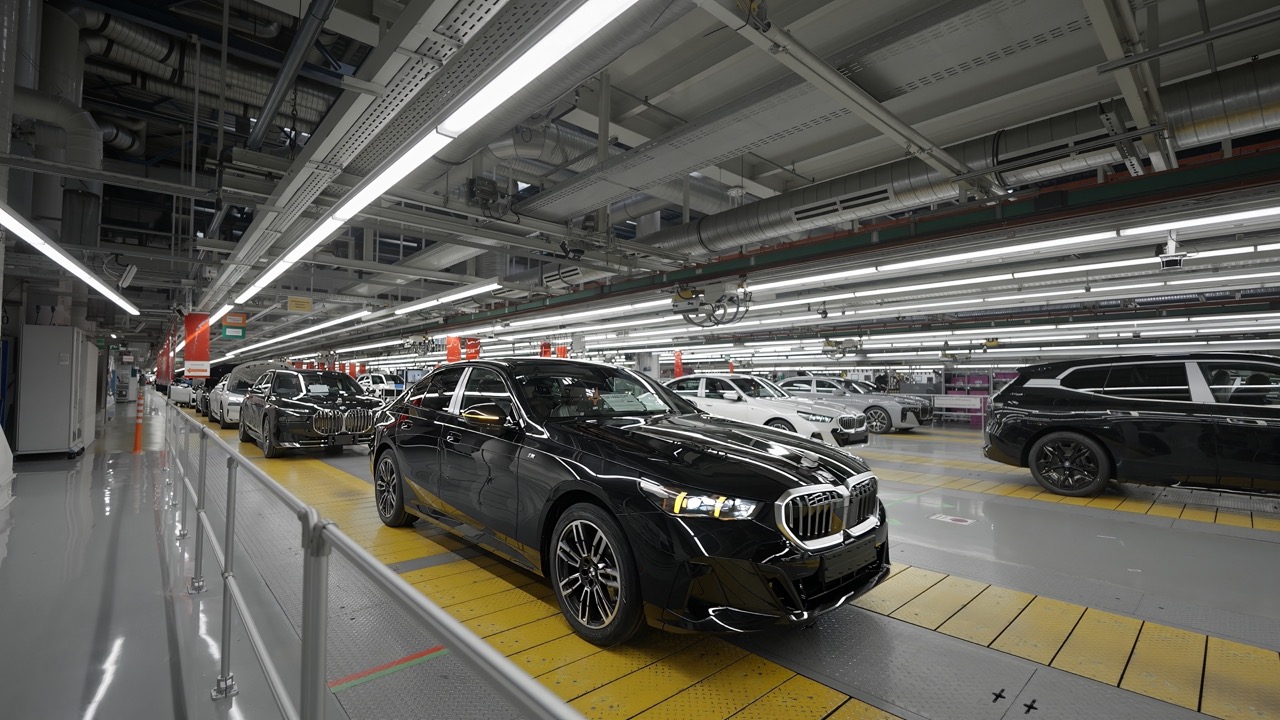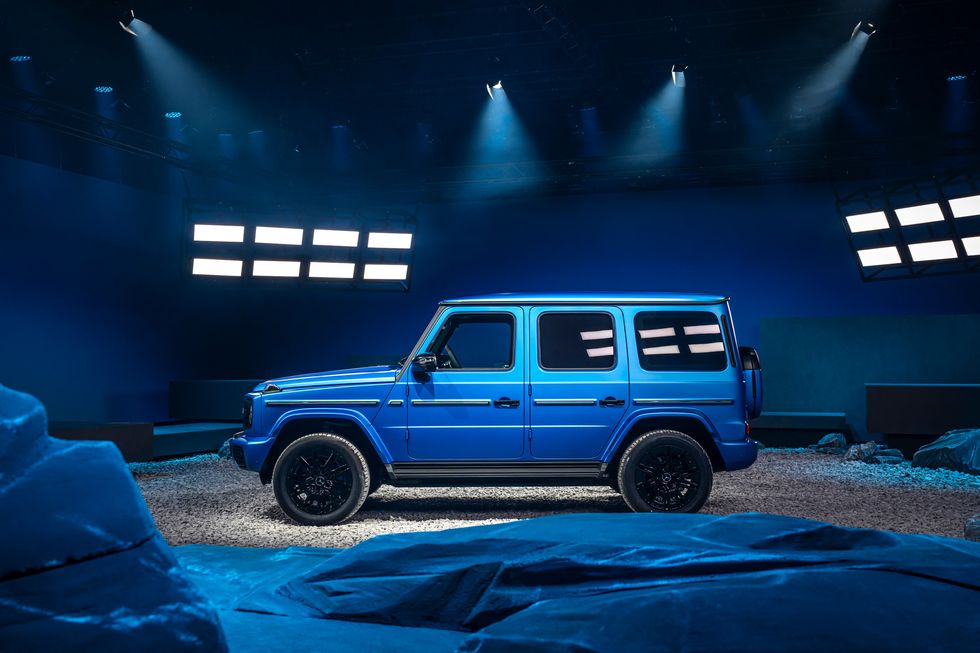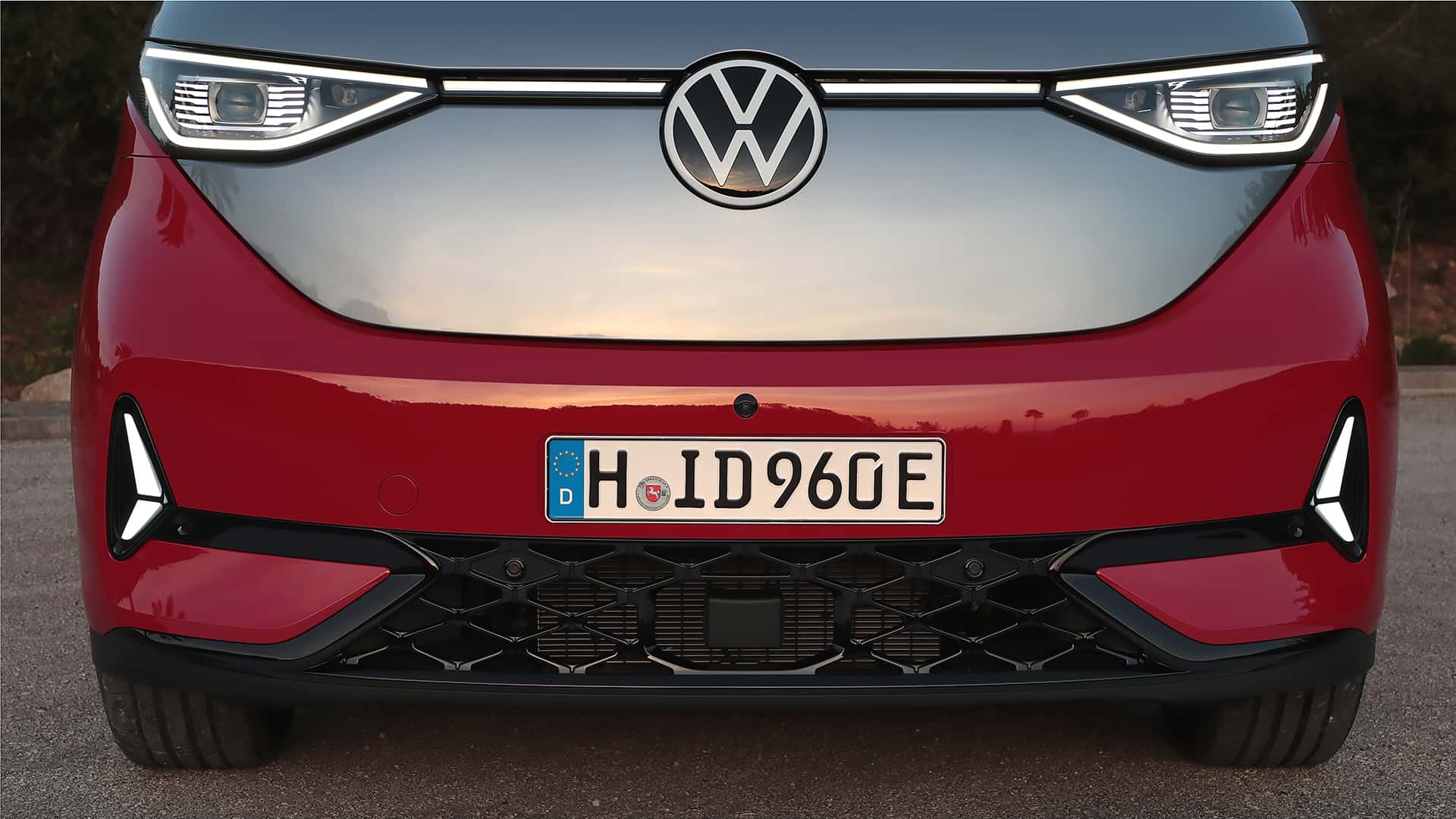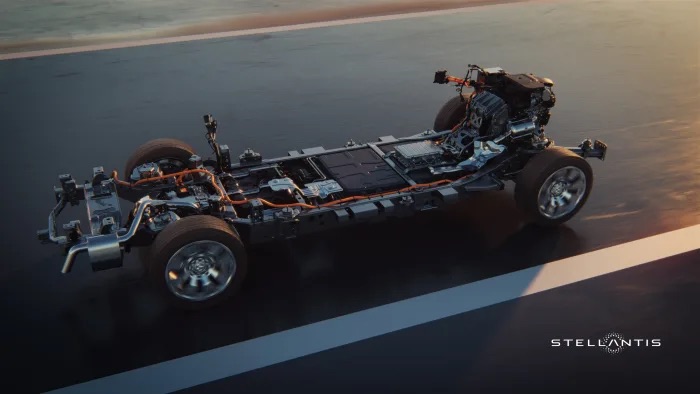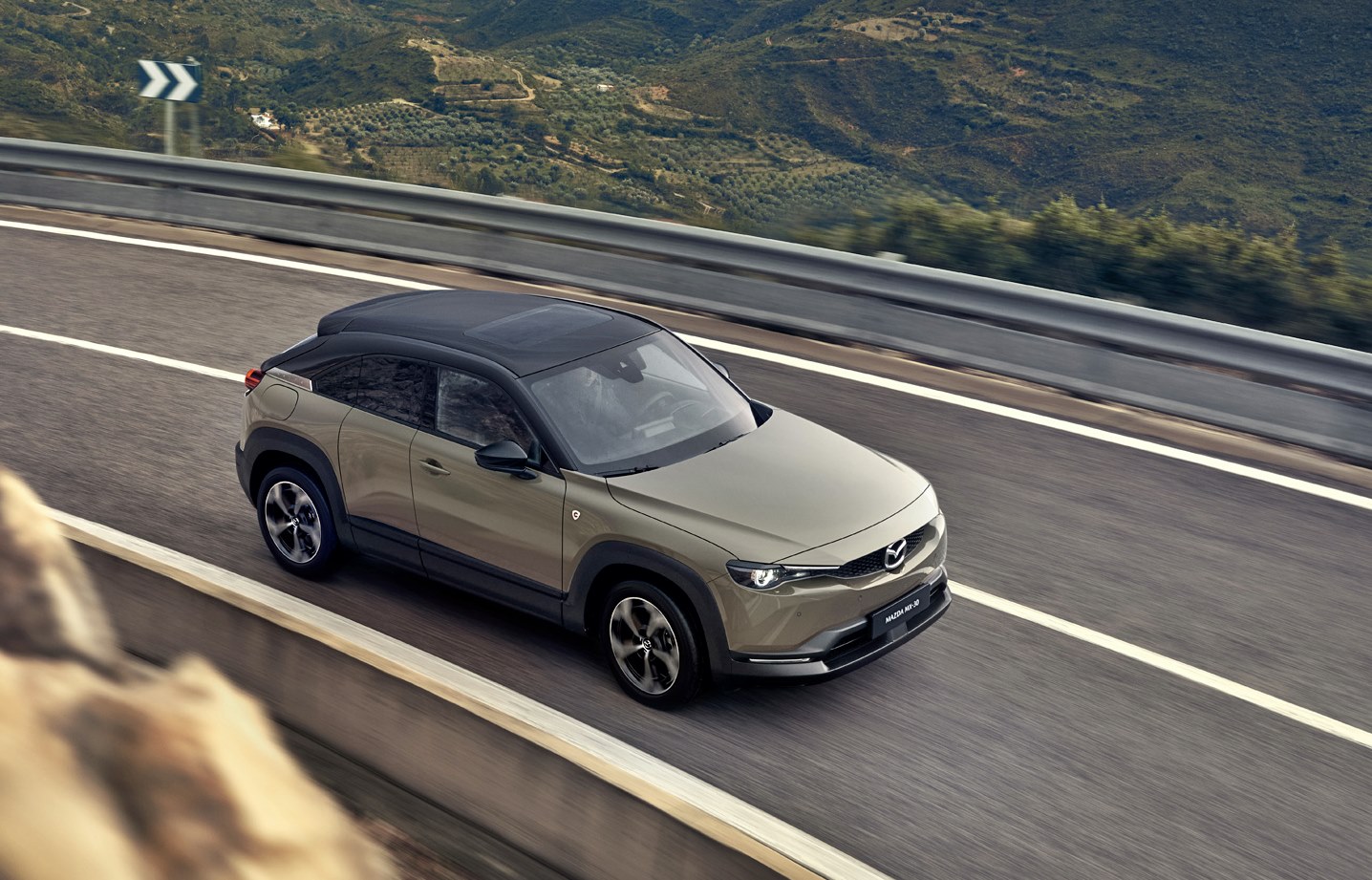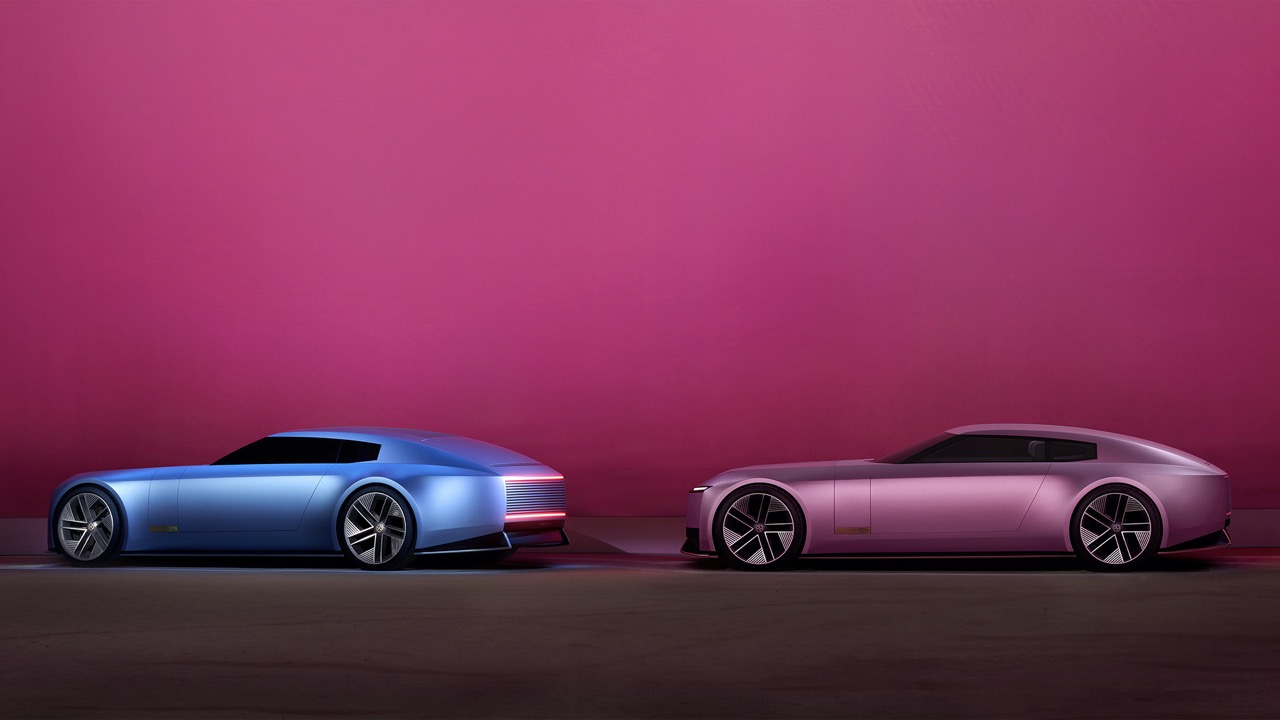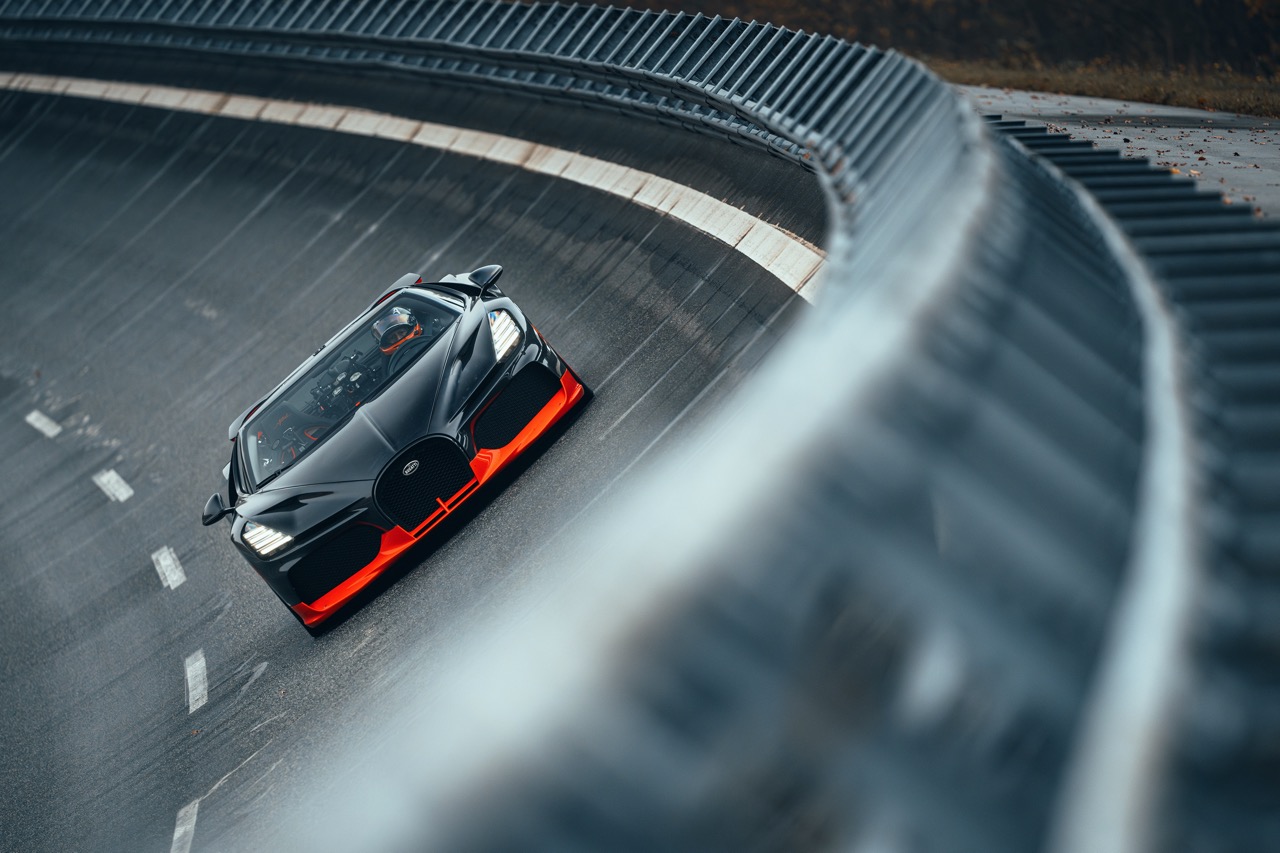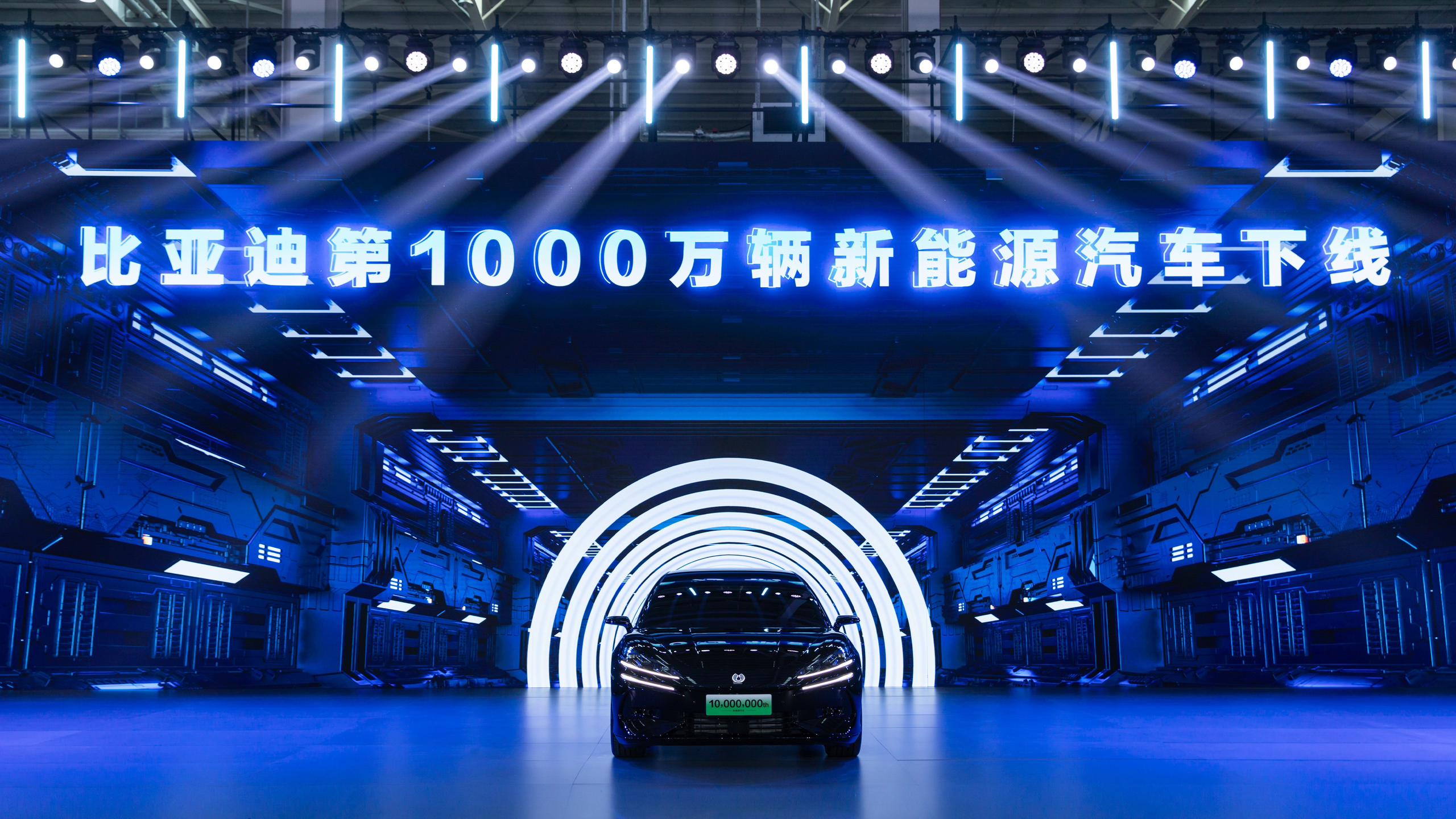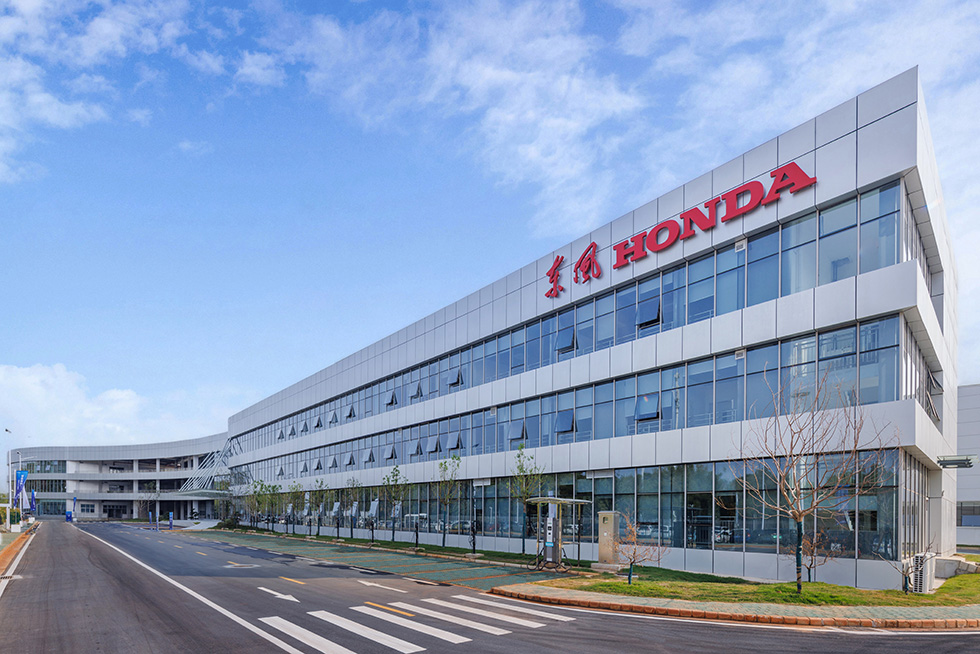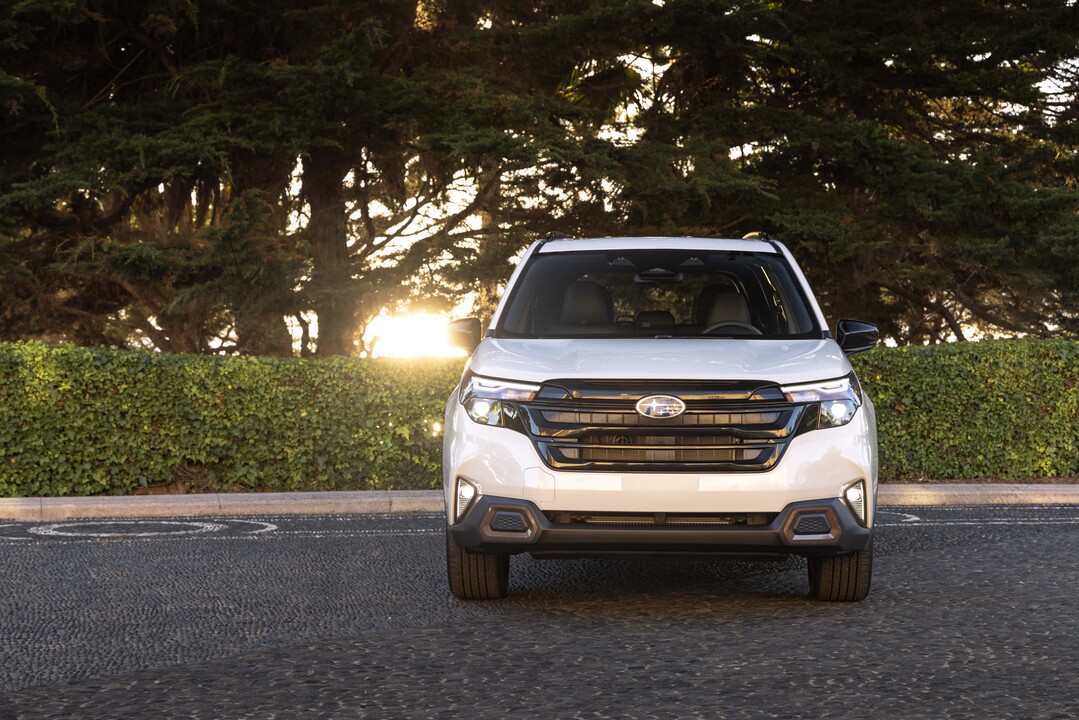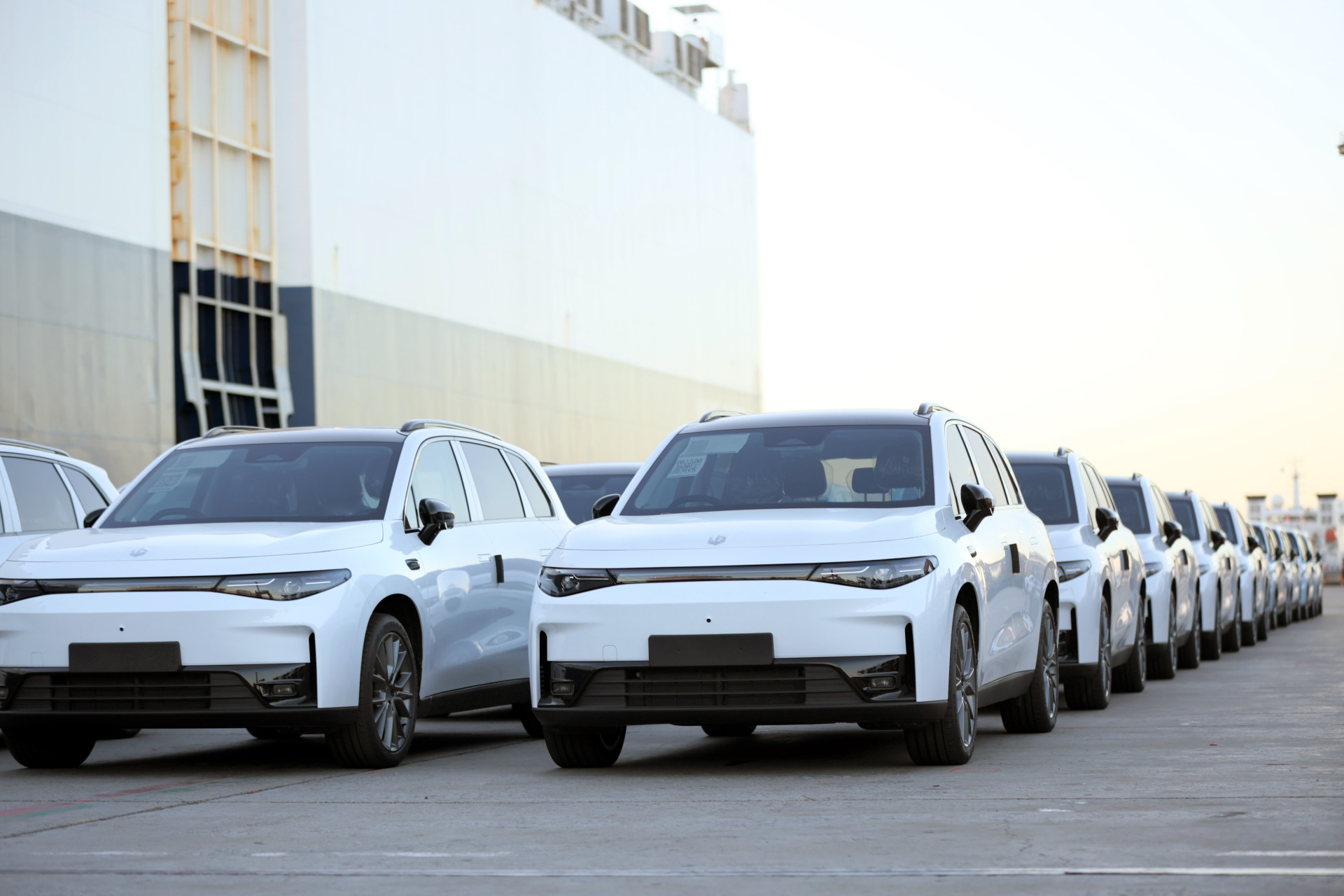Ford has unveiled the new EcoSport, which now comes with an intelligent all-wheel-drive system and a more sporty variant called ST-Line. Building on its predecessor’s design, the Blue Oval has decided make the vehicle a little more rugged this time around.
The rather docile grille has been repaced with a matte-black two-piece louvered one that certainly is in-line with Ford’s current design language. It’s projector headlights slope forward and towards the front fascia, which reminiscent of the ones on the current gen Mustang.
from the side, the two-tone paint scheme does provide the EcoSport with a sporty look as does the 17 or 18-inch alloy wheels. Ground clerance of certain variants might vary depending on the suspension setup that is utilized.
Ford has left the rear relatively untouched safe for minor changes to the taillights and rear bumper, both decent decisions considering that there wasn’t much wrong with them in the first place. The decision to keep the spare tyre internally has had a positive effect on the rear, giving rise to a cleaner and sporty overall feel.
Speaking if the new vehicle, Steven Armstrong, group vice president and president, Europe Middle East and Africa, Ford Motor Company, said, “Ford has sold 150,000 EcoSport compact SUVs in Europe since we first introduced the model to the region in 2014.The new Ford EcoSport offers customers even more style, comfort, capability and choice.”
There will be a diesel (EcoBlue) and a petrol (EcoBoost) engine available with the new EcoSport but the most notable feature of the lot is the Intelligent AWD system. It will be capable of distributing power between the front and rear in a 50/50 configuration.
In fact, it will be able to do this in a mere 20 miliseocnds, which Ford says is 20 times quicker than a human eye takes to blink. It will work seamlessly by transitioning torque between all four wheels, to allow for better traction and stability.
The 125bhp 1.5-litre EcoBlue engine is all-new and comes with a number of innovative technologies. The 1.0-litre EcoBoost engine is offered in several states of tune, which include 140bhp, 125bhp and 100bhp. And if the 4WD life isn’t your thing, you can still opt for the 2WD option that is significantly lighter and easier on fuel consumption as well.
Compared to the outgoing vehicle, the new EcoSport gets optimized springs, dampers, spring aids, steering gear, rear axle twist beam, Electronic Stability Programme settings and steering assistance profiles.
The interior takes on a more refined look with easier to use controls and soft-touch materials, and a new centre console ergonomically designed for easy operation and featuring fewer buttons. The seats have been redesigned to offer good comfort and premium feel.
Occupants can also match the ambiance to their mood with adjustable interior lighting that can be set to one of seven colours. But the cabin’s main party trick is the ability to store small items in compartments hidden through out the cabin including under the seats.
As mentioned earlier, the EcoSport will also be offered as an ST-Line variant that has sportier styling and sports-tuned driving dynamics. As a result, it gets Ford Performance-inspired bumpers and side skirts, black-finish roof rails and headlight bezels, 17-inch Dark Tarnish alloy wheels, ST-Line badging and extended painted roof and door mirrors as standard.
As for the interior, you get a unique ST-Line leather-trimmed flat-bottomed steering wheel; unique partial leather seats featuring Miko®-Dinamica inserts – an ecological suede made from recycled polyester and red stitching, leather handbrake lever and gear knob, ST-Line branded scuff plates, and stainless steel sports pedals.
Other tech that are available across all variants is the SNYC 3 (Voice Assistant) and 8-inch colour touchscreen, which can be operated with pinch and swipe gestures. The B&O sound system offers impressive sound quality for the audiophile in all of us.
The EcoSport for the first time comes with Cruise Control with Adjustable Speed Limiter that helps drivers keep within speed limits, and a Rear View Camera that makes parking more efficient and safer. There’s also Blind Spot Detection and Roll Stability Control, which should help novice drivers handle the vehicle with more confidence.
There’s no word yet on when Ford will bring this vehicle over here, but it should hit European markets very soon.




